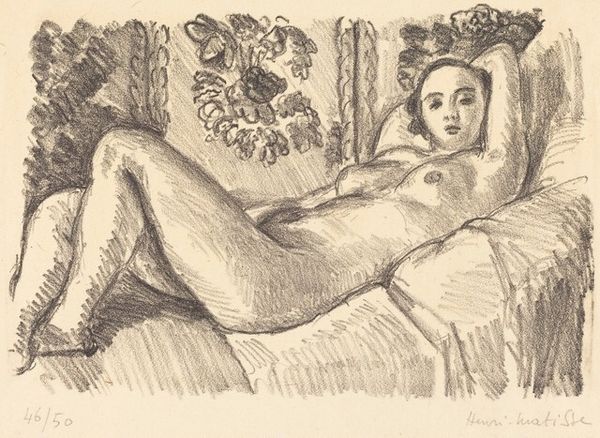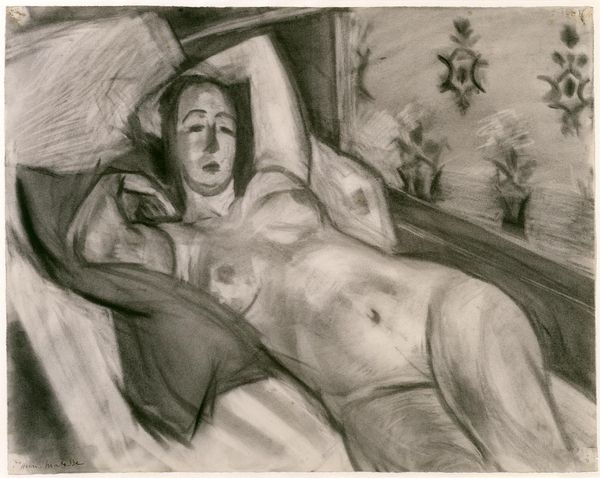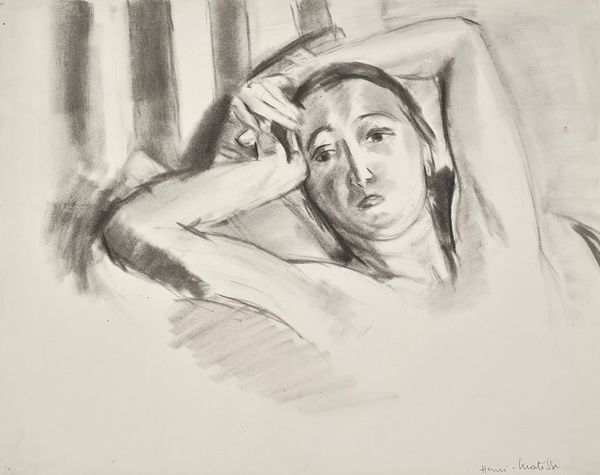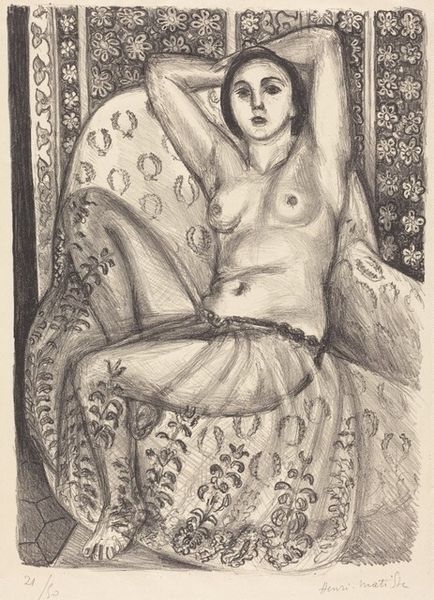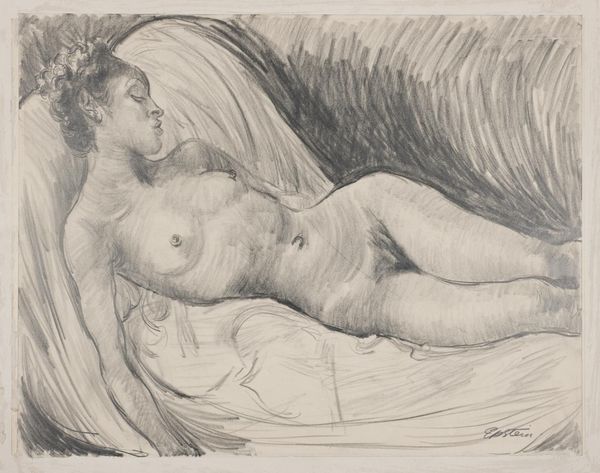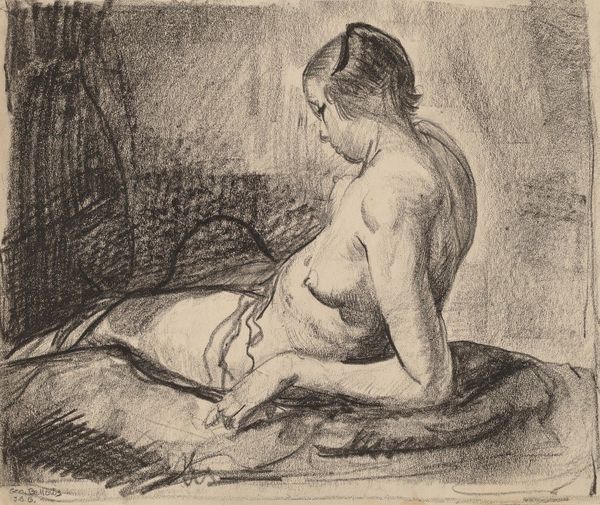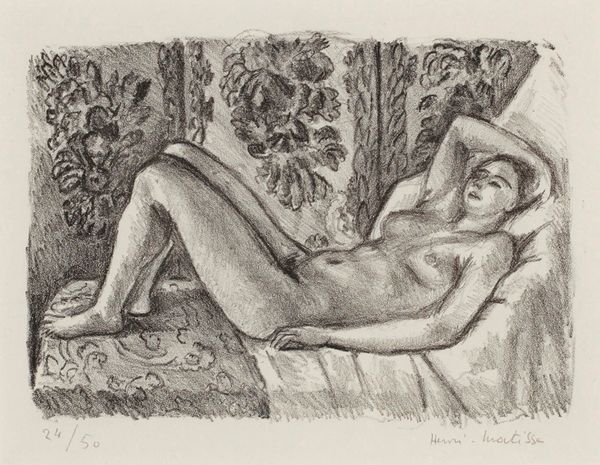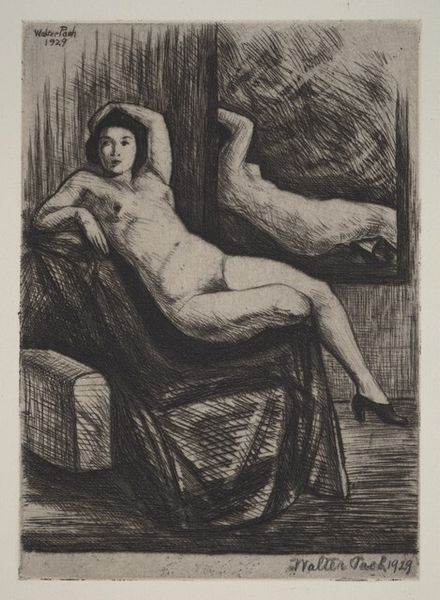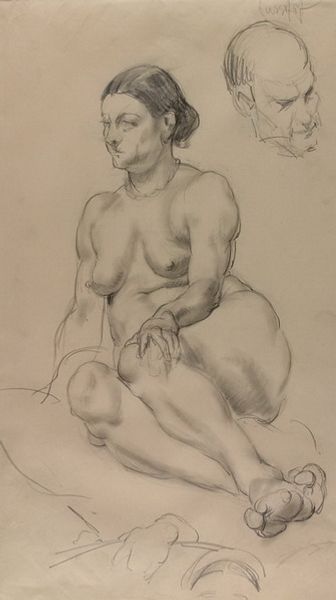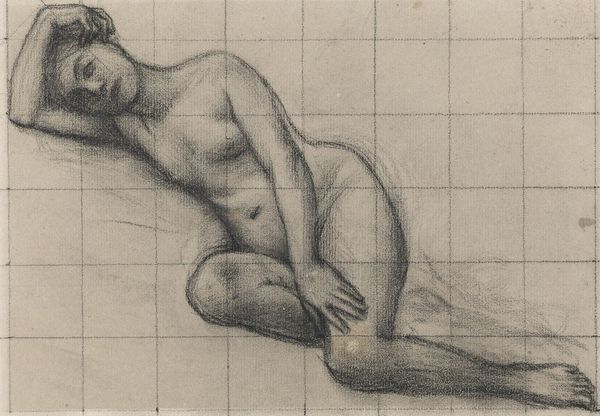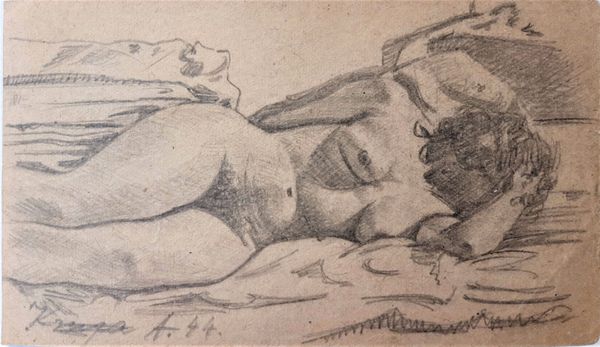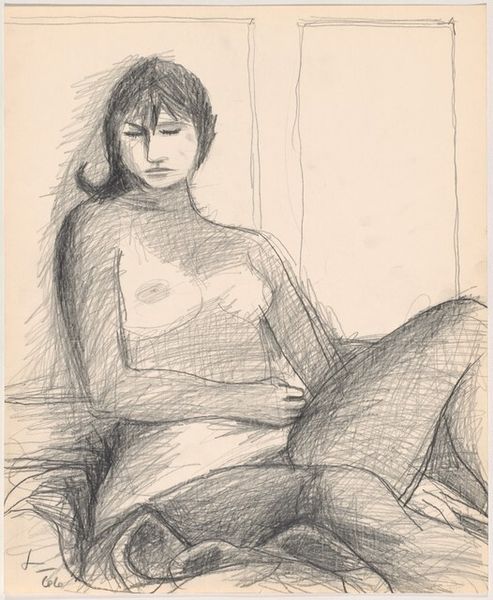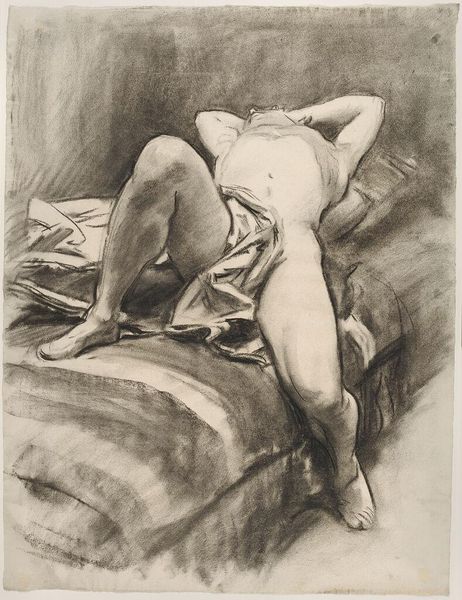
Copyright: National Gallery of Art: CC0 1.0
Curator: Henri Matisse’s 1923 pencil drawing, "Odalisque with Necklace," presents a reclining nude, swathed in shadow and opulent textiles. What strikes you initially? Editor: An almost weary sensuality. The model isn't posing; she's lounging. Her gaze is unfocused, and the hatching suggests a kind of listless heat, as though she has just woken up, or perhaps has just resigned to being gazed at. It's quietly powerful. Curator: Indeed, and it's interesting to consider Matisse’s fascination with the "odalisque" as a subject. She embodies Orientalism, but does he also subvert the tradition somewhat? Is she a stereotype, or does she feel lived in? Editor: She does feel lived in, though she's absolutely framed within that problematic colonial lens. It’s impossible to ignore the power dynamics at play. However, the lack of idealization, the weight of her body, gives her an individual presence that exceeds simple exoticism. It complicates things. Her necklace is heavy and distracting, her pose slightly tense, revealing more of the complexity of representing female subjects in this historical moment. Curator: And that’s reflected, of course, in Matisse's masterful use of pencil. He revels in its texture, the way he builds up light and shade with short, urgent strokes. I see an artist wrestling with form, with representation itself, seeking a truth beyond mere prettiness. I love how her face is softly shadowed, creating a mysterious effect. It feels honest. Editor: The very visible pencil marks disrupt any sense of illusion. We're constantly reminded that we're looking at a constructed image, a process of looking and marking. In the end it seems to hint at her reality, instead of simply imposing one upon her. Curator: Absolutely. I agree that the drawing captures more than just a likeness. It is, as you mentioned earlier, that weight—both literal and metaphorical. Thank you for opening my eyes a little more to that, and maybe inviting others to linger and find something unique in their viewing. Editor: Thanks for unpacking the orientalist layers—now, whenever I look at this image I’ll remember that first feeling I felt from it was a resistance against such easy labels, too.
Comments
No comments
Be the first to comment and join the conversation on the ultimate creative platform.
